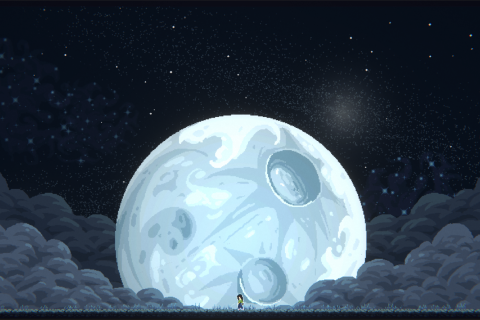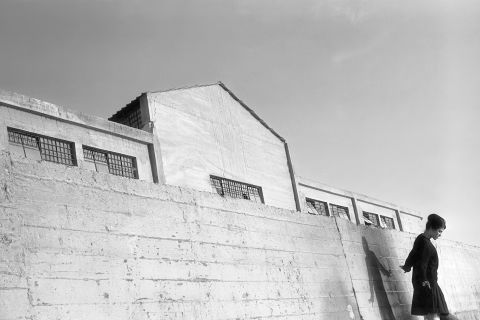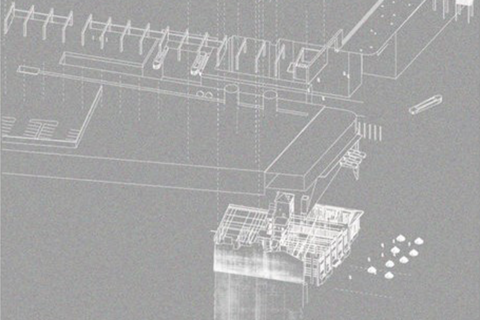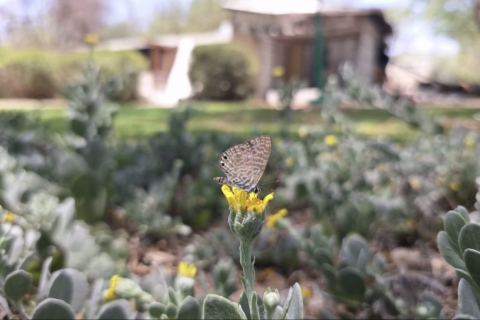Bezalel News
חדשות בצלאל
أخبار بتسلئيل
Behind the Map: Mapping, Fabricating and Sifting
The Map became part of the field of art and design because of books such as "You Are Here": Personal Geographies and Other Maps of the Map, Imagination Paperback-Illustrated, 2003; "The Map as Art", Contemporary Artists Explore Cartography, 2010; and the comprehensive exhibition "The Map as Art", that deals with mapping in contemporary art, which was written and curated by Katherine Harmon. This exhibition conceptualizes, clarifies and makes accessible the wide depth, richness and abundance of map making in art and in contemporary visual culture.
Maps are a visual expression of a worldview. They are artistic commentaries, scientific or philosophical, of a specific "reality". By being a visual archive of knowledge from different fields, the map serves many functions: a means of domination, monitoring and inspection, a means to implement ideology and power, a way of resistance and liberation and it is also a way to express one's dream and imagination.
The cartographic map indicates places and borders within territories by using signs that organize the three dimensional world into a two dimensional platform. Maps can be drawn in different artistic, literary and technological ways. We expect a map to help us locate ourselves in a space, avoid getting lost, orient ourselves (in the past the top of the map was the East: The Orient), navigate to our destination and to show us our place in the world.
But maps, like national atlases, mainly brand and position the mapper. The maps are used as logos, as signs of control. The British mapping service for example, is a tool of government and colonial control just as much as it is a means for positioning, vacationing and touring, and it establishes national awareness while promoting and branding the image of the British Empire. Maps can also be non-topographic, and describe "personal geographies" as expressed in Harmon's words, or describe spaces that are not geographic spaces. For example, internal spaces, Thinking maps, memory, time and history.
The word "Map" is connected to the word sifting, because mapping also involves sifting. The map presents what the mappers who create it decide to show. Therefore, they have the ability to sift, to exclude, to decide what is essential and what is not, and to present facts as one would set a tablecloth, deciding what is important on the map and what they want to hide, such as the threatening the shameful or the challenging. In this way, maps become an instrument to shape the collective consciousness.
In the short story, "On Exactitude in Science", Jorge Luis Borges criticizes in an ironic manner the modern concept of scientific mapping which claims it is a realistic representation of the world. In the story he expresses the impossibility and the inability inherent in the presumption of creating a perfect copy or replication of the world. He exposes the absurdity of the instrumental approach to mapping, which believes in the power of measuring instruments to reveal the world. Nowadays, when there is great dependence on navigating and simulation instruments that help us navigate in different spaces, there is much confusion between information and knowledge, as well as a loss of capacity and intelligence that is based on human sense experience. Our continual dependence on technological advances changes our outlook. In the process of submission to technology, semiotic spaces become true and realistic, even more than reality itself: the signified and signifier switched places and create a world of simulacrum, images with no source, as shown by Baudrillard, to the extent that at times the map precedes the territory.
With the expanding power and influence of visual communication and visual language skills, the influence of mapping as a medium, as a research tool and a means of expression in wider aspects of life, intensifies.
Mapping as medium enables conceptual and practical creation and is a way of subjective expression, fitting new realities and hidden ones that appear just below the surface. Within the map there still exist unknown areas which are threatening, repressed personal and collective regions, like imaginary demons and monsters, that used to be drawn on world maps as Terra Incognita regions.
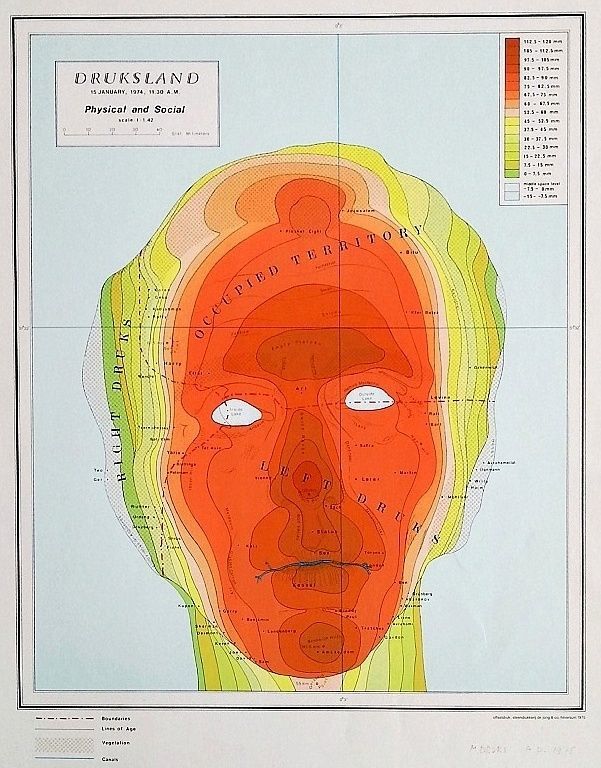
Michael Druks, Druksland, 1975
And so, new forms of mapping are improving and developing, rhizomatic, from the "bottom" according to the interests of the population and the residents of certain spaces, and not necessarily that of the hegemony: civil mapping, communal mapping, and participatory mapping, are new and developing fields.
Participatory mapping is a political and social planning apparatus, a new qualitative research method of society used as a way of creating social or environmental change. New alternative methods of mapping are used by weaker segments of the population as a way for its own citizenry to regain control of the space. Anti-mapping is a socio-political tool that became a professional pursuit that allows one to track and prove hidden or suppressed facts, to demand rights, representation and transparency and can be used as a means to rewrite narratives. "Anti-mapping" is an answer to vertical mapping from the "top", that authorities, the hegemony and those in power spread all over the world.
The sociologist, Zygmunt Bauman, claims that in the fluid modern era the old political order collapsed and socio-political structures are changing fundamentally. The decision as to what is appropriate and just is detaching from the power to do things and to enforce them.
The government and the authorities have neither the power nor the means to implement decisions. It is very interesting to figure out who is mapping society nowadays and controlling knowledge. Maybe the giants of technology, high tech and media? The global social networks, as well as defense and spying organizations are becoming the new hegemony, and they are mapping mankind according to their needs and interests.
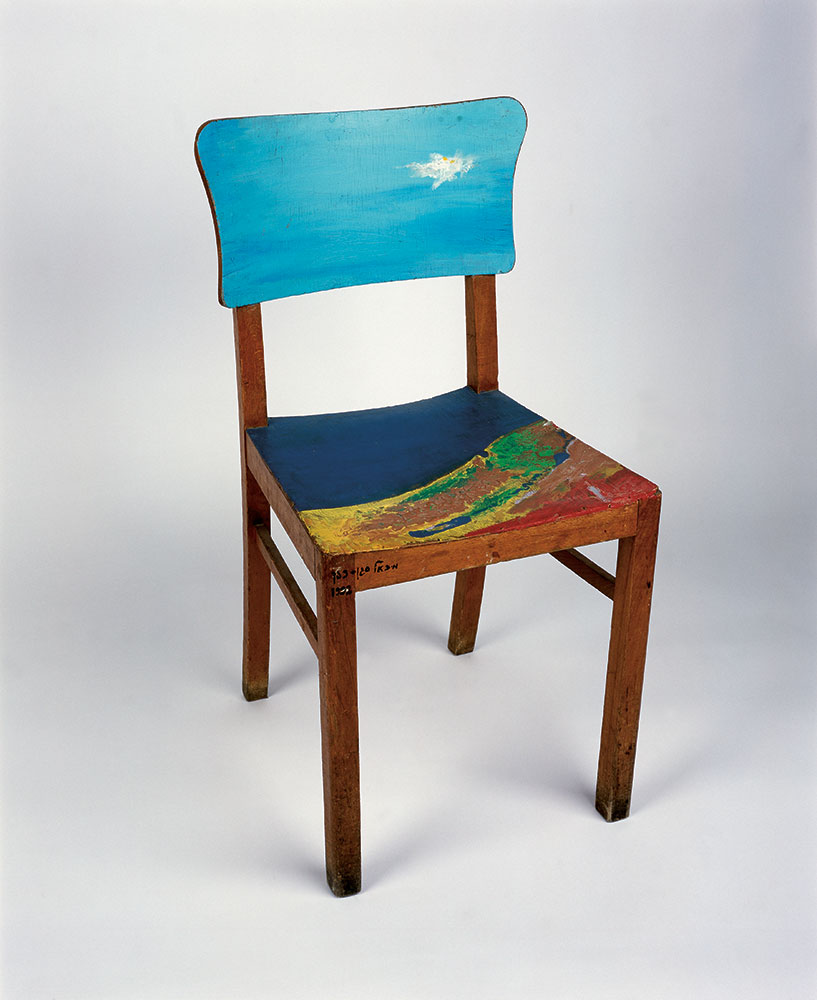
Michael Sgan-Cohen, "Hityashvut", 1992
Chen Shapira
Lecturer in the Department of Visual and Material Culture




